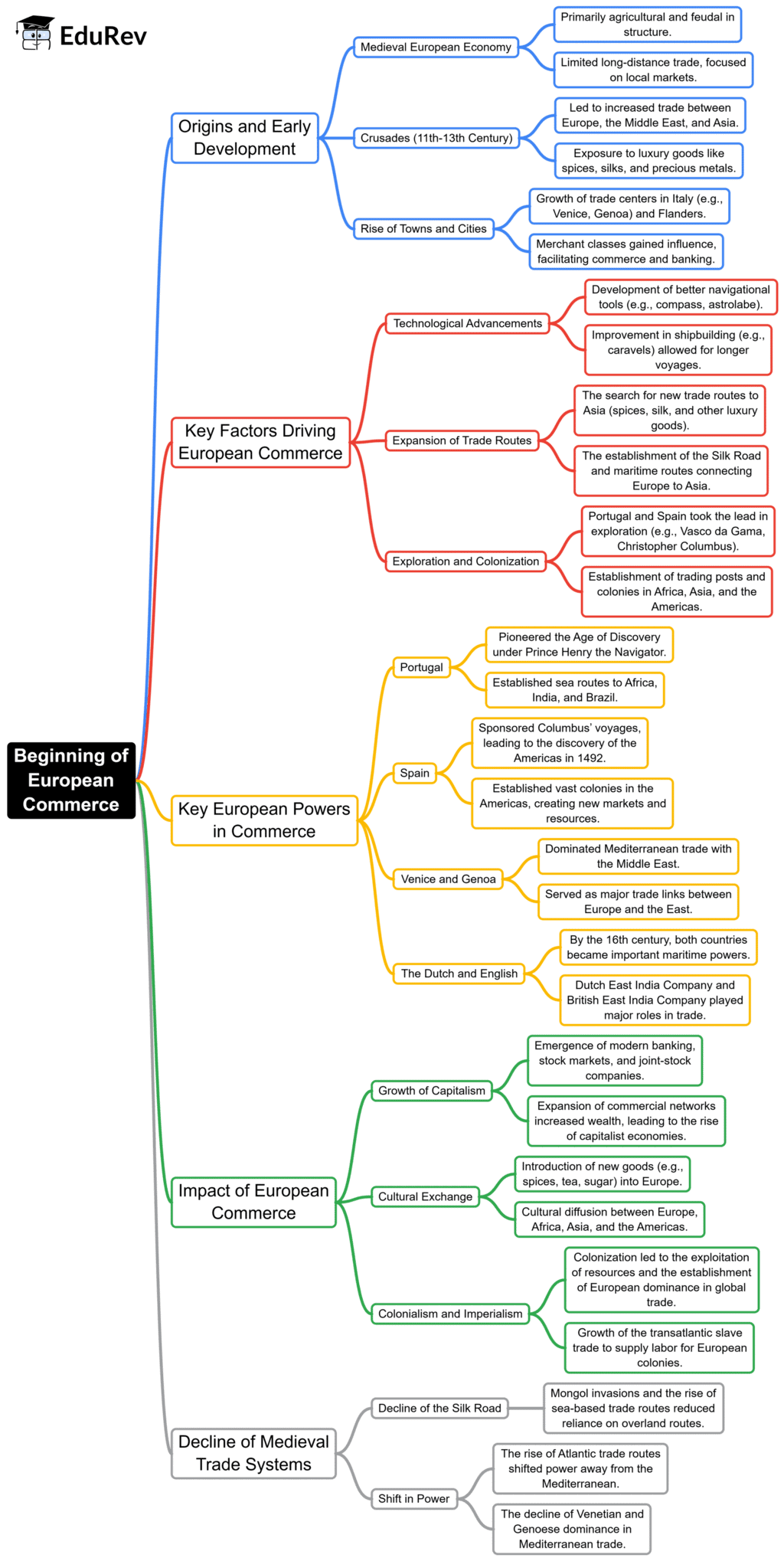UPSC Exam > UPSC Notes > History for UPSC CSE > Mind Map: Beginning of European Commerce
Mind Map: Beginning of European Commerce | History for UPSC CSE PDF Download

The document Mind Map: Beginning of European Commerce | History for UPSC CSE is a part of the UPSC Course History for UPSC CSE.
All you need of UPSC at this link: UPSC
|
110 videos|653 docs|168 tests
|
FAQs on Mind Map: Beginning of European Commerce - History for UPSC CSE
| 1. What were the key factors that led to the beginning of European commerce? |  |
Ans.The beginning of European commerce was influenced by several key factors, including the Renaissance, which sparked interest in exploration and trade; advancements in navigation and shipbuilding technology; the rise of powerful nation-states that sought to expand their influence; and the demand for spices and luxury goods from Asia. The establishment of trade routes to the East, particularly through the Mediterranean and later around Africa, also played a significant role in the growth of European commerce.
| 2. How did the Age of Exploration impact European trade? |  |
Ans.The Age of Exploration significantly transformed European trade by opening new routes to Asia, Africa, and the Americas. Explorers like Christopher Columbus and Vasco da Gama discovered new lands and sea passages, which allowed European powers to establish colonies and trade networks. This expansion led to the exchange of goods, cultures, and ideas, known as the Columbian Exchange, which profoundly affected economies and societies across continents.
| 3. What were the main commodities traded during the early period of European commerce? |  |
Ans.During the early period of European commerce, key commodities included spices (such as pepper, cloves, and nutmeg), silk, precious metals (like gold and silver), and textiles. These goods were highly sought after in Europe and drove exploration and trade initiatives. The demand for these commodities created lucrative trade routes and established a global trading system that connected Europe with Asia, Africa, and the Americas.
| 4. How did the establishment of the mercantilist system influence European commerce? |  |
Ans.The mercantilist system, which emerged in the 16th century, promoted the idea that a nation's wealth was measured by its stock of precious metals and that trade surpluses were essential for national strength. This led to increased government involvement in the economy, with policies aimed at maximizing exports and minimizing imports. As a result, European nations sought to acquire colonies and monopolize trade routes, significantly influencing commerce and economic policies during this period.
| 5. What role did joint-stock companies play in the expansion of European commerce? |  |
Ans.Joint-stock companies played a crucial role in the expansion of European commerce by allowing multiple investors to pool their resources to fund large trading ventures. This reduced individual risk and enabled the financing of long-distance trade expeditions. Companies like the Dutch East India Company and the British East India Company established monopolies on trade in specific regions, facilitated colonization efforts, and significantly contributed to the growth of global trade networks.
Related Searches




















